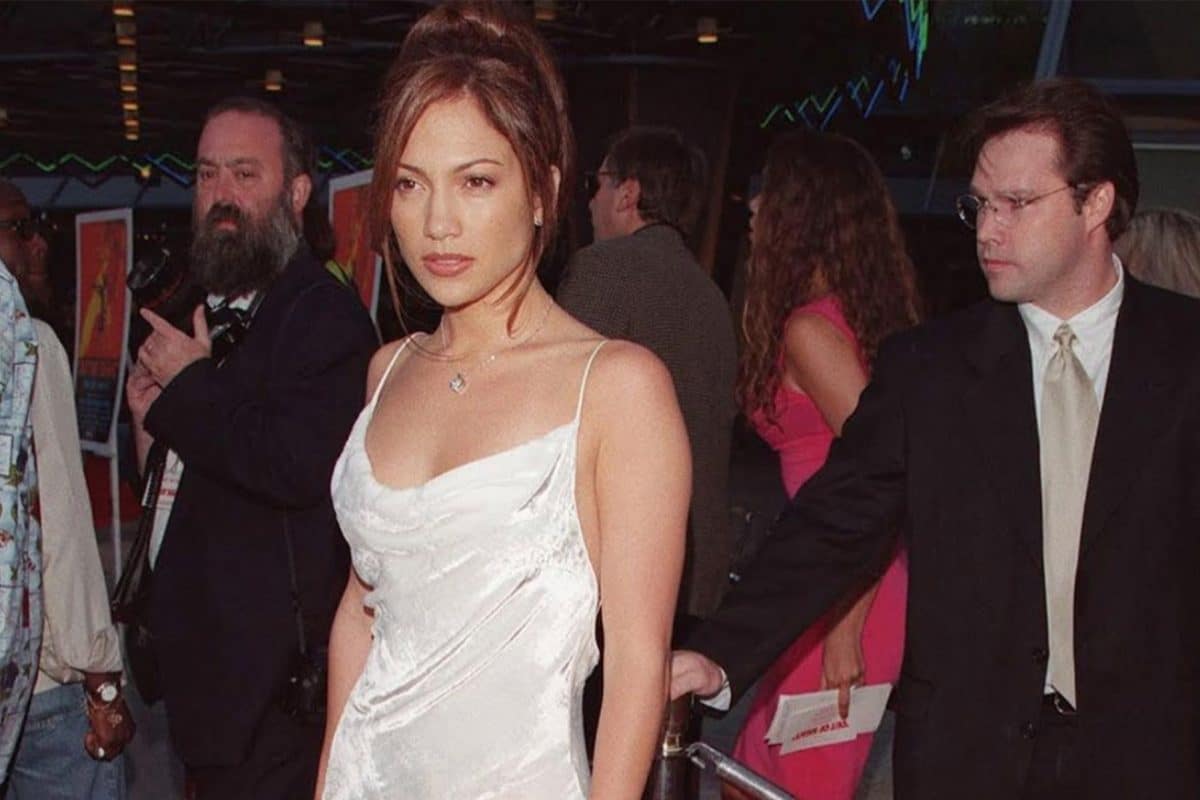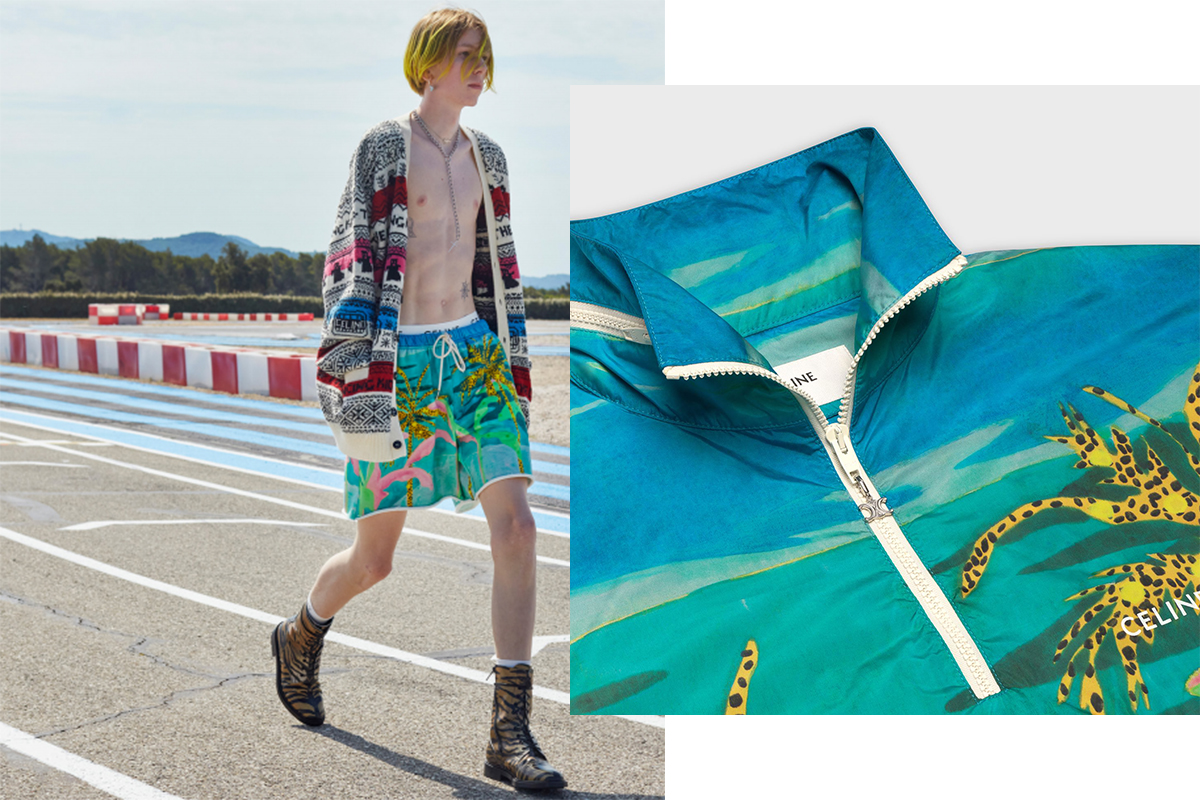
Tyson Reeder is no ordinary artist and Celine is no ordinary fashion house. It would only make sense then for two of art and fashion's extraordinaries to pair up in perfect union to create something quite monumental for our time. For those of you who are not so quite acquainted, Tyson Reeder is an American artist and painter that instils jest and humorous commentary into the everyday mundane. Here, in celebration of the artists latest collaboration with the house of Celine, we talk to Tyson Reeder about isolation, escapism and the intimate insights into the challenges of practicing as an artist in 2021.
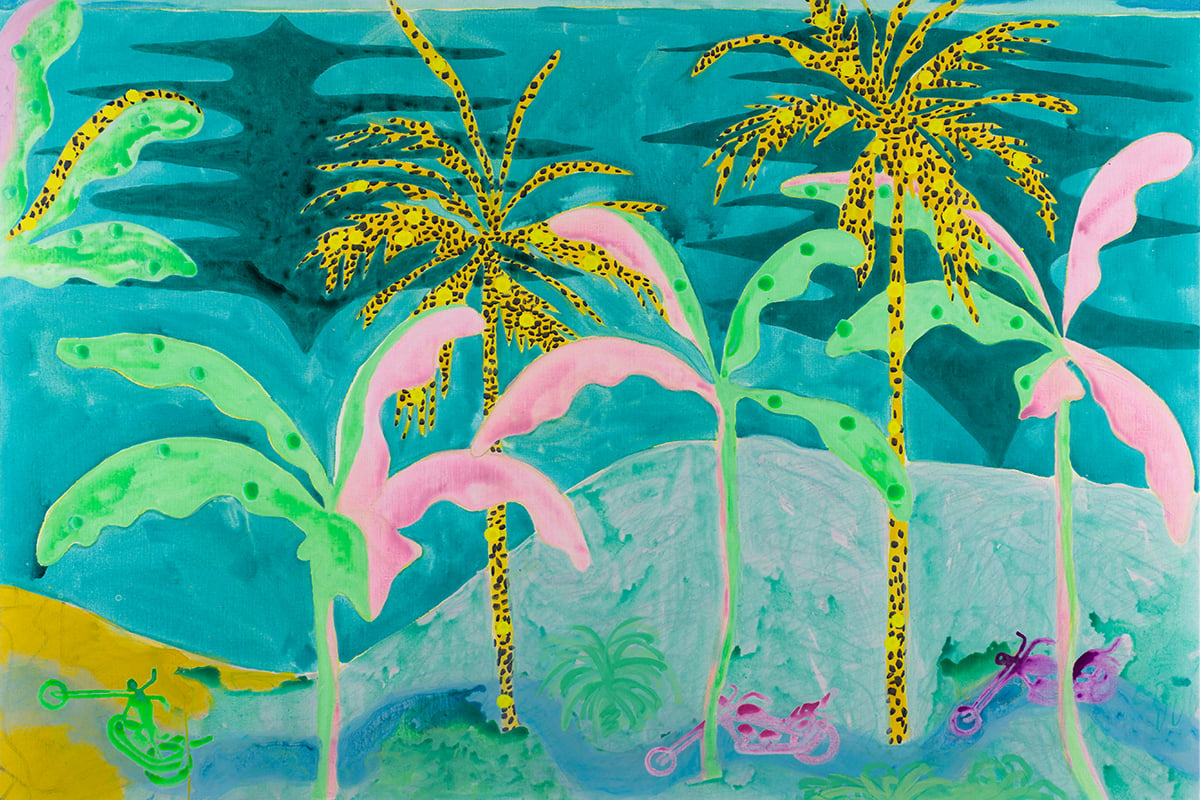
Autobahn, 2019 Tyson Reeder Courtesy of Celine
Can you tell us a little more about your most recent collaboration with Celine?
Hedi and the Celine team responded to some recent paintings shown at my gallery CANADA in New York and reached out to CANADA director Christiana Ine-Kimba Boyle to see if I would be down to collaborate. It was a thrill to be asked and I love what they came up with.
What were some of the more specific themes or inspirations that we see throughout the collection?
I think my work happened to fit a particular sense of longing for aesthetic pleasure in this truly strange and difficult year of isolation. I’ve often drawn from a kind of utopic imagery that has been mediated and heavily stylised – like an air-brushed beach scene on the side of a van or t-shirt. The collection has a similar sense of escapism through found or quoted looks, channeling boys in their bedrooms online daydreaming about lifestyles temporarily out of reach.
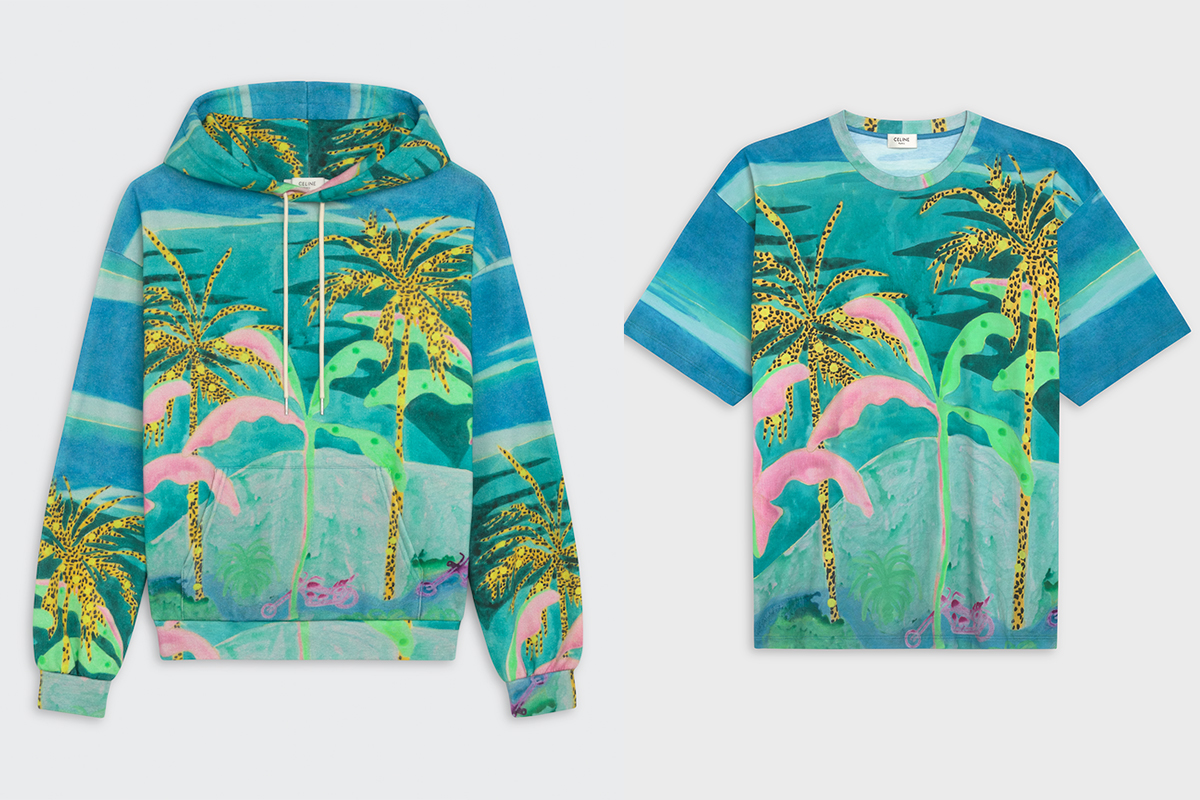
What drew you to your mixed media approach using crayons, markers, pencils and watercolours in your work?
I first started showing work in New York at Daniel Reich Gallery, a tiny garden-level apartment in Chelsea which lent itself to more intimate scaled works. I liked the limitation of getting all my materials for these works at the local drugstore – index cards, nail polish, fabric dye, sharpies, ball-point pens, and bleach - and the constraint of using manufactured colour rather than mixing up some nuanced personal palette. This led to an ongoing egalitarian approach to materials where refined paint coexists alongside the most basic office supplies.
You are known to paint en plein-air, could you speak a little more about this process?
I began plein-air painting with artist friends and educators about ten years ago as the soul-crushing ubiquity of pre-Instagram digital blogs was starting to shape how painting was being experienced and produced. We were all longing for direct experience, still are, and painting together outside, watching real light change while hitting real things in real-time, felt cathartic. This led to an ongoing project called Beach Painting Club with my brother Scott, where painters have been invited to make work in the elements on Venice Beach, CA, Sammy’s Beach in East Hampton, Rockaway Beach, NY, and Miami Beach, FL.
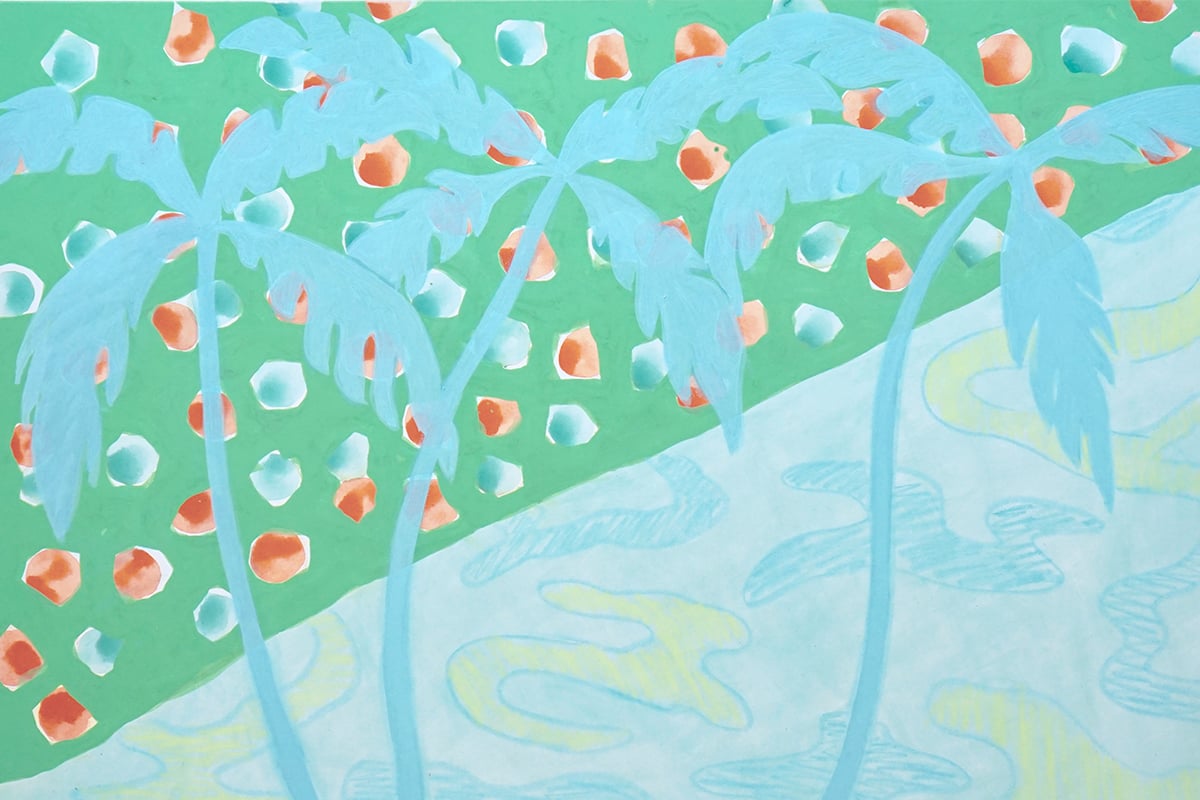
Planet Mu, 2020 Tyson Reeder Courtesy of Celine
In these challenging times, what are some of the challenges you are facing as an artist?
Keeping an intimate community or scene going in this alienating year of disembodied Zooms and virtual viewing rooms has been challenging. I thrive off the tactile ritual of experiencing work within architecture, ideally filled with a room full of real, breathing human friends, and the call-and-response of seeing shows then going back to the studio and painting. The project with Celine has made me think more about collaboration as a lifeline to different communities of people. It has really refreshed my practice.
What is informing you and your work in 2021
I’ve been thinking a lot about the loss or diffusion of regional aesthetics in visual art and music, post-internet. Culture, in general, used to have a slower gestation period, where a particular type of dance music, for example, could only be heard in the city of its origin, like Chicago house or Berlin techno. I’ve been wondering if a painting could be built up in arbitrary layers like a footwork track.
View the full collection on celine.com



